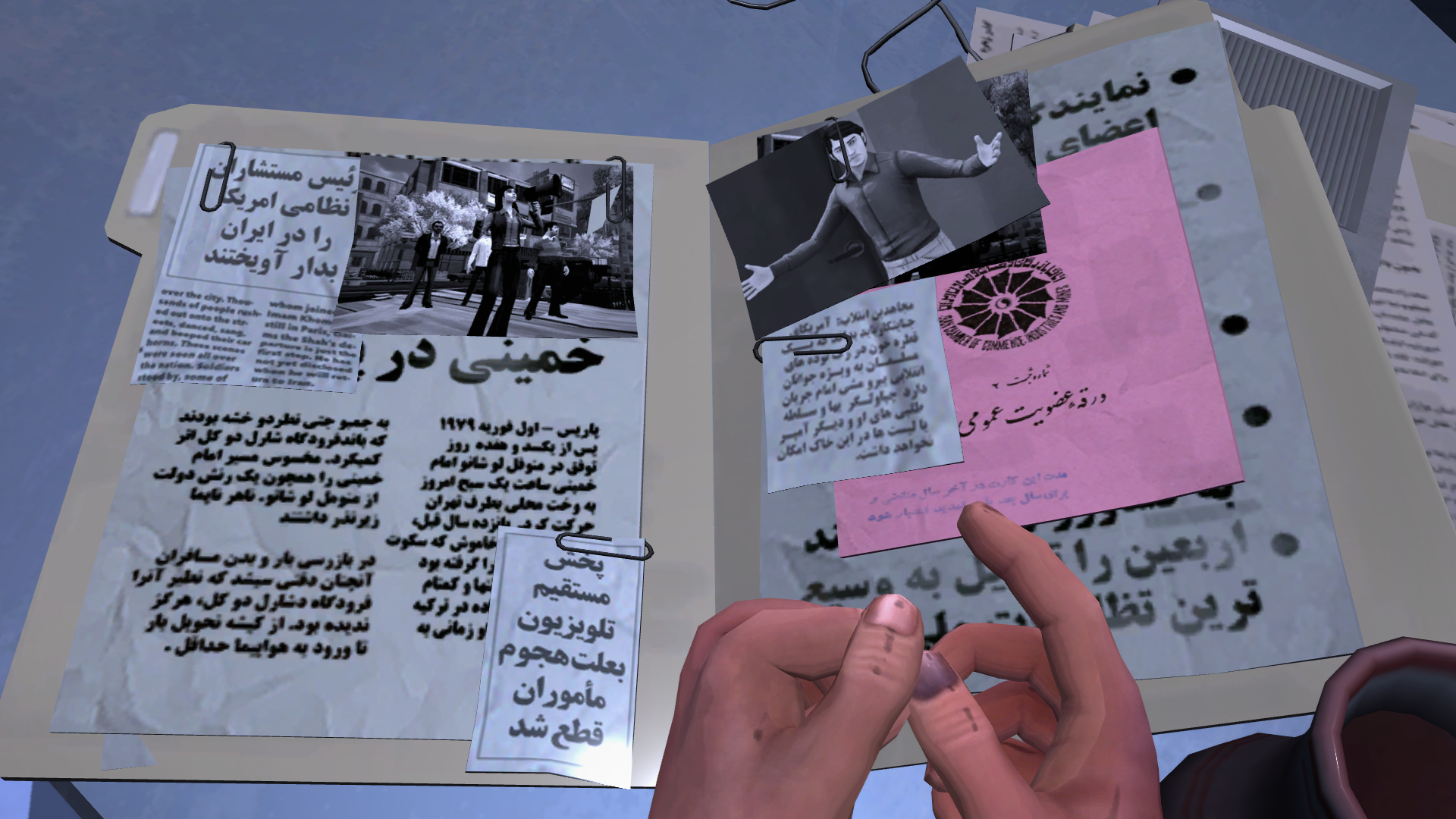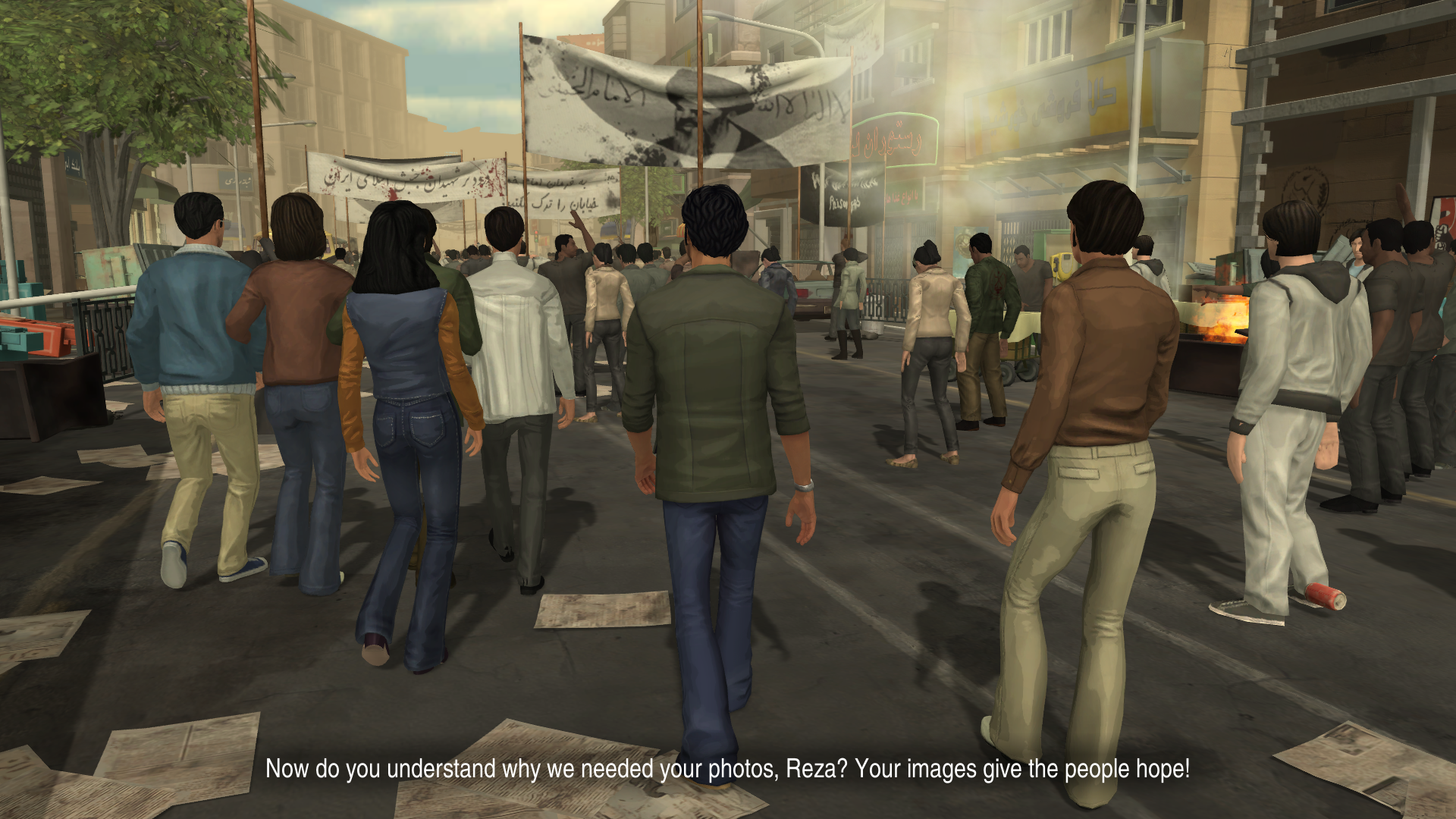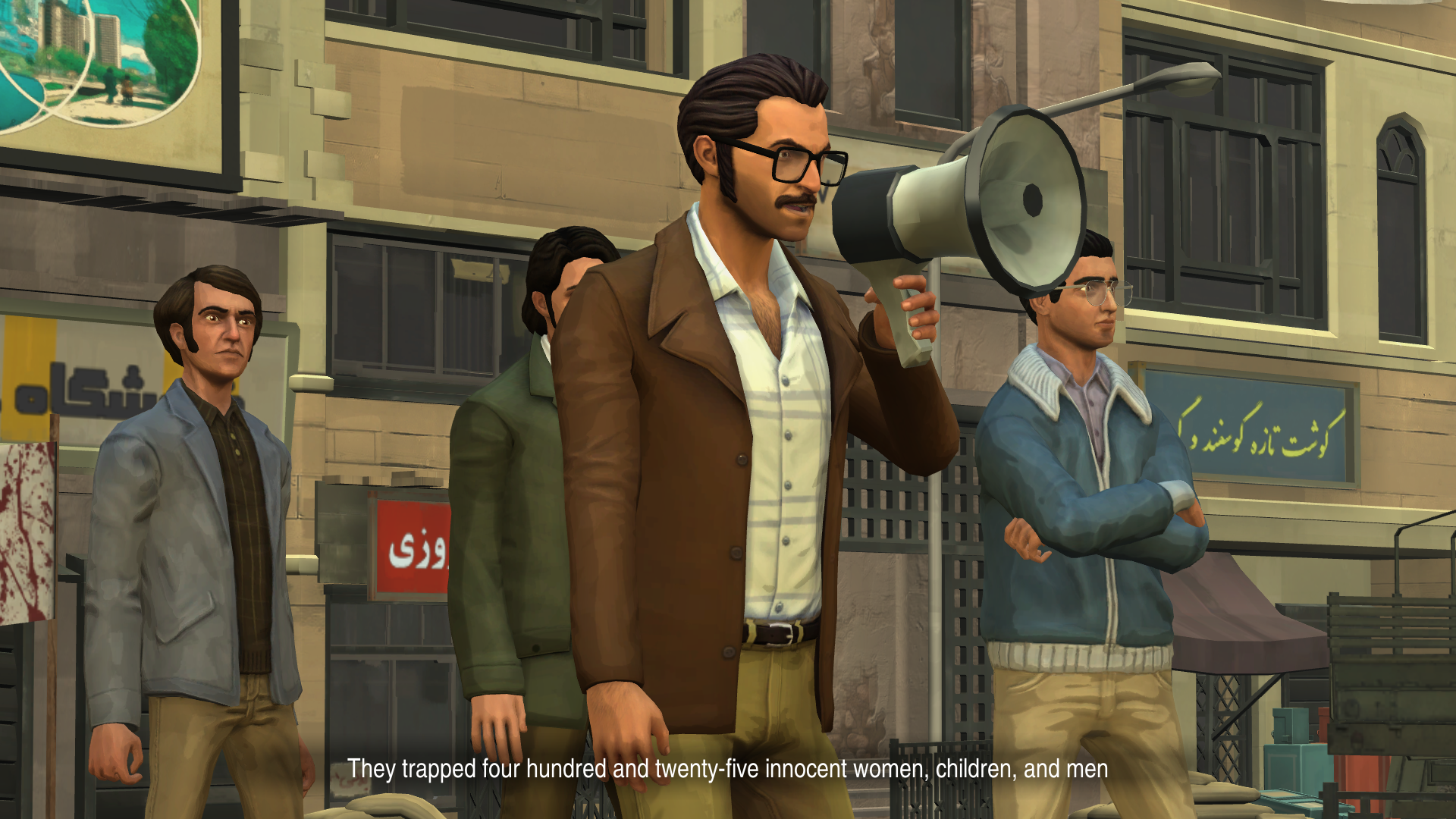From the get-go, 1979 Revolution: Black Friday transports players into the political hotbed that is the late 70’s Iranian Revolution by forcing the main character, Reza Shirazi, to gather all his essential belongings and escape from the government of Iran at the time, led by Mohammed Reza Shah (known as “The Shah’s Regime”).
For Reza, these belongings include journals, pamphlets, and, the most important narrative device for his character of the game, his photographs. Reza’s passion as a photographer plays an integral part in archiving and helping the Revolution’s message, as well as determining what choices are made throughout the game’s story. Reza, with the help of friends, family, and (sometimes) foes, must survive and navigate through the 1978-79 Iranian Revolution that completely changes the country that he has grown up in.
The star feature that 1979 Revolution: Black Friday touts over its other story-driven competition (such as Telltale’s projects) is that the game incorporates real-life media into the narrative. These pieces of history are made an important focus of the story’s progression and, ultimately, the choices that are made. Some of these include literature of significant value to Iran at the time (such as the poetic words of Rumi) or the impassioned speeches of Ruhollah Khomeini. For instance, we see Rumi waxing poeting in the following line:
“There is a candle in your heart, ready to be kindled. There is a void in your soul, ready to be filled. You feel it, don’t you?” - Jalal ad-Did Muhammad Rumi
Others include examples of methods of protesting during the revolution: pamphlets, street art, and posters.
However, the most exciting form of real-life media in the game has to be the photographs that Reza’s character takes throughout the game. These photographs simulate photography of the chaos of the Iranian Revolution, which are mirrored with their real-life versions of each photo as pictures are taken. The photographs, coupled with the audio of the scenes, really transport the player into 1979 Iran in a meaningful way unseen in most narrative games. I enjoyed some home video footage that was taped throughout the 60s and 70s in Iran, which added to how divisive and costly this revolution was to the people involved and made me sympathize with and understand certain characters more.
With all of this in mind, it’s no surprise to know that the game’s story was crafted from developer Navid Khonsari’s memories and experiences with Iran and the revolution at the time. Khonsari himself faced controversy when the game was announced and started becoming popular. The backdrop helps facilitate a complex and deep dynamic between Reza, his friends, his family, and his homeland of Iran, that neither appears wholly negative nor positive towards the revolution or the Shah’s Regime.
Reza’s character throughout the game is faced with choices that often do not benefit him, but could affect the lives of those involved dreadfully. And, as with any great story-telling game, the choices are not always comfortable ones and are based on several emotional and logical factors. Khonsari and iNK Stories avoided glorifying the violence of the Iranian Revolution well, while still keeping the emotional complexity and brutality of those involved.
The gameplay in 1979 Revolution: Black Friday, unfortunately, is where I found most of my complaints with the game. Similar to Telltale’s games (and many other titles in the story-adventure genre), 1979 Revolution: Black Friday has non-narrative gameplay, which includes the photography bits (as mentioned above), area exploration, and quicktime events. While I said that the photography was one of the game’s strong suits regarding driving the narrative and placing the player into the atmosphere of the Iranian Revolution, it becomes a bit of a crutch in comparison with the other different gameplay features.
The area explorations, while interesting coupled with the ambient audio and the media that can be perused within the scenes, feels clunky as Reza is only able to slowly walk and is blocked by crowds of people in the protest settings. Markers indicate what Reza should be focused on, which manages to help direct exploration and hinder immersion. However, these scenes were very helpful in gaining context of the pieces of media found throughout the game within the Iranian Revolution in real life.
Unfortunately, the QTEs became my least favorite part of the game very quickly. 1979 Revolution: Black Friday carries over the worst mechanics of the modern story-driven adventure genre; many QTEs included Reza avoiding obstacles while escaping, fighting, and even performing medical aid. Most of the QTEs felt out of place for the story and were only seemingly incorporated to make 1979 Revolution: Black Friday feel more like "a video game." Some fine-tuning of the mechanics could have been beneficial to make it feel less immersion breaking; specifically, on the PlayStation 4, the calibration felt off ever so slightly, which caused Reza to get shot a few times accidentally in the process. But, overall, the QTEs never posed much of a problems as there were so few of them.
1979 Revolution: Black Friday's visuals generally were very well done. The narrative is the meat and cheese of this game, making the visuals of each scene the bread: stable and a good foundation to set up the atmosphere they were going for. The settings for each episode aren’t just in the streets with the protestors, but in unique locations that give us context into what life in Iran was like in the late 70’s. The characters give off the same effect of the time with their feathered hairstyles and flared pants. However, the facial and body animations of some of these characters are notably awkward and clunky at times, while realistic at other times.
[pullquote]"1979 Revolution: Black Friday is a fascinating perspective on a significant historical event that affects the world today."[/pullquote]
My only other complaint stems from the story: it was far too short to my liking, and (depending on your choices) ends on a somewhat disappointing note. However, Khonsari has expressed interest in creating a sequel in the future, which, combined with the $5.99 price tag on Steam makes 1979 Revolution: Black Friday all the more appealing to play. Those jumping in on a console may need to weigh whether it's worth it to pay double the price to play on your TV.
1979 Revolution: Black Friday is a fascinating perspective on a significant historical event that affects the world today. Despite clunky mechanics and sometimes awkward visuals, the title goes above and beyond regarding storytelling by incorporating real-life pieces of media, making a nuanced and varied story out of literal history that most people know nothing about.
1979 Revolution: Black Friday
- Platform
- Switch, PS4, PC, iOS, Android, Xbox One
- Developer
- iNK Stories
- Publisher
- iNK Stories
- Genre
- Adventure




